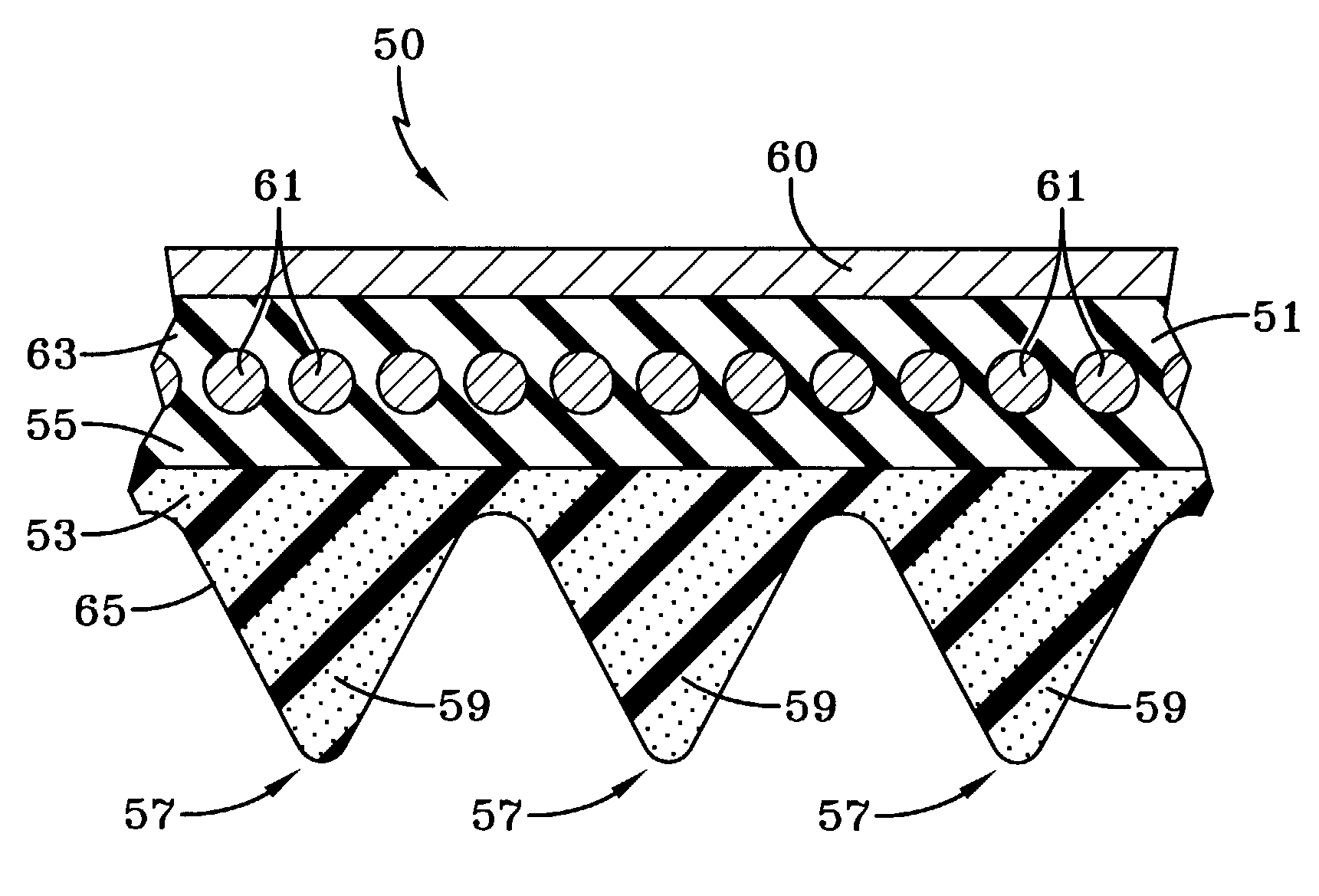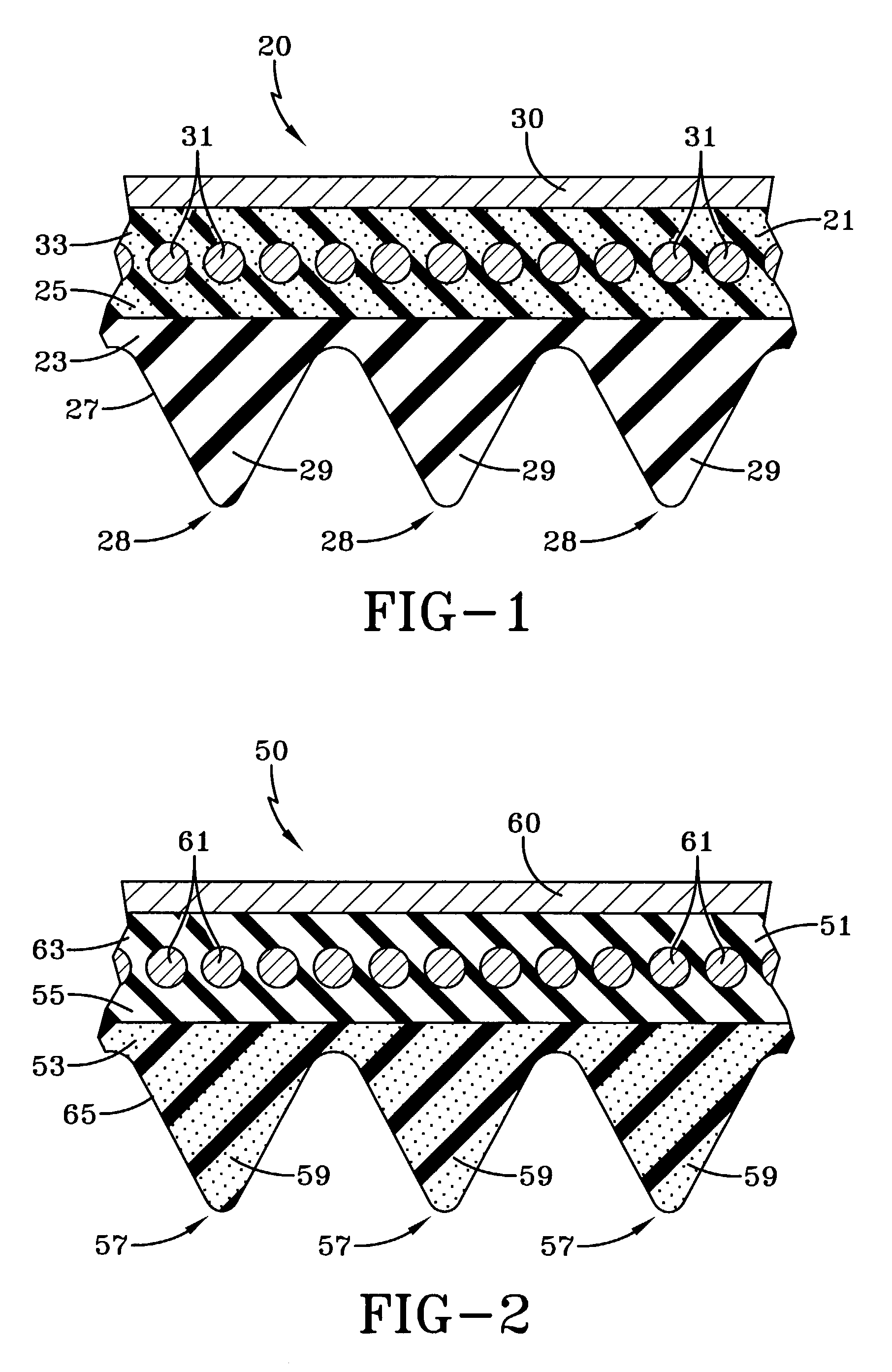Power transmission belt
a power transmission belt and belt body technology, applied in the direction of transportation and packaging, mechanical equipment, synthetic resin layered products, etc., can solve the problems of insufficient isocyanate treatment, prone to fraying, and insufficient effectiveness of isocyanate treatmen
- Summary
- Abstract
- Description
- Claims
- Application Information
AI Technical Summary
Benefits of technology
Problems solved by technology
Method used
Image
Examples
example i
[0046]In this example, the effect of nylon treatment of Kevlar fiber is compared with conventional isocyanate treatment. Samples of Kevlar cord were treated with an aqueous dispersion containing about 5% by weight of polyamide and about 1% epoxy as indicated in Table 1. The treated cords were then built into toothed belts. These belts were evaluated for tensile strength retention and moisture resistance, and compared to typical isocyanate treated cord as indicated in Table 2 and Table 3.
[0047]
TABLE 1PartsComponentby WeightWater100Denecol EX31312.5Genton 3102110NaOH (30%)0.11Epoxy resin from Nagase Chemicals Ltd.2Aqueous dispersion of 10% by weight of polyamide terpolymer from General Plastics Corp.
[0048]
TABLE 2Tensile Strength1 (lb.f, dual strand, 1 1 / 8″ wide belt)IsocyanateNylonHoursTreated CordTreated Cord 021,02016,9654816,91514,703% Change−19.5%−13.31Belts were flex tested at 3500 rpm and 200 lbs. hub tension.
[0049]
TABLE 3Change in Belt Center to Center Distance (mm)(24 hour fle...
PUM
| Property | Measurement | Unit |
|---|---|---|
| length | aaaaa | aaaaa |
| length | aaaaa | aaaaa |
| length | aaaaa | aaaaa |
Abstract
Description
Claims
Application Information
 Login to View More
Login to View More - R&D
- Intellectual Property
- Life Sciences
- Materials
- Tech Scout
- Unparalleled Data Quality
- Higher Quality Content
- 60% Fewer Hallucinations
Browse by: Latest US Patents, China's latest patents, Technical Efficacy Thesaurus, Application Domain, Technology Topic, Popular Technical Reports.
© 2025 PatSnap. All rights reserved.Legal|Privacy policy|Modern Slavery Act Transparency Statement|Sitemap|About US| Contact US: help@patsnap.com


